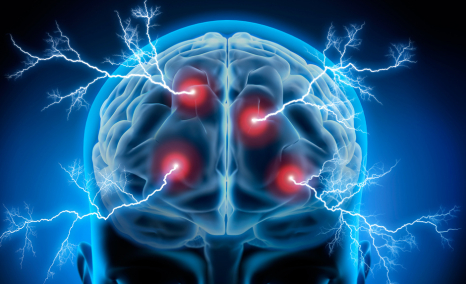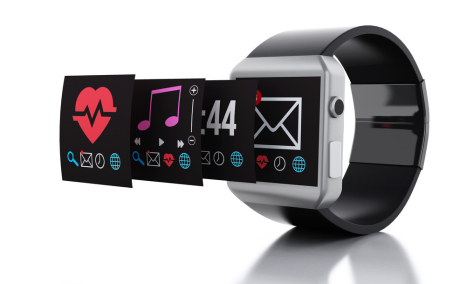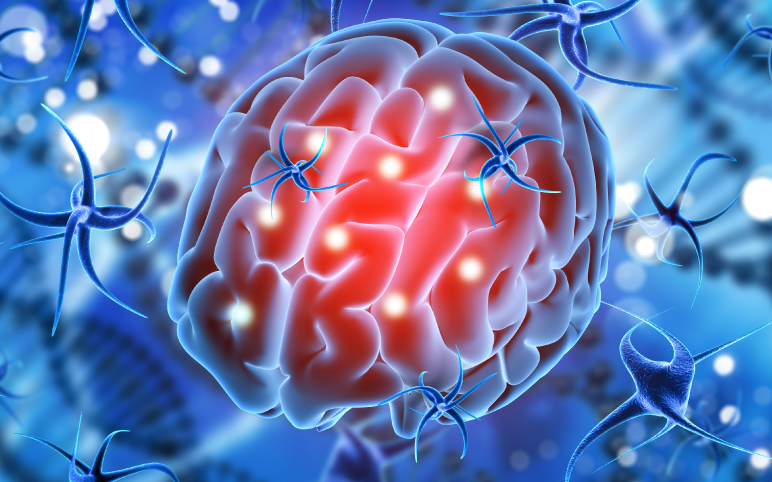Role of Seizures Alert and Monitoring Devices in the Management of Epilepsy
Jul 13, 2022
Table of Contents
As per the WHO, roughly 50 million people worldwide have Epilepsy. The burden of Epilepsy is growing in almost every geographic region. According to the Global Burden of Disease report on the burden of neurological diseases, it is observed that idiopathic epilepsy accounted for 5% of all neurological DALYs and 1.3% of deaths. Epilepsy contributes to around 1% of the global total of days lost due to ill health.
Epilepsy is associated with recurrent, unprovoked seizures. There are more than 30 different types of seizures, including Myoclonic Seizure, Focal to Bilateral Tonic-Clonic Seizure, Generalized Tonic-Clonic Seizure, Generalized Absence Seizure, Tonic Seizure, Atonic Seizure, Focal Aware Seizure, and Focal Impaired Awareness Seizure, among others.
Downloads
Article in PDF
Recent Articles
- CAR-T in killing tumors; Amunix raises $73M; Autism findings in protein-targeted treatment
- Celiac Disease – Intestinal damage of Gluten
- ‘Software’ differences between humans and monkeys
- Sanofi’s Rare Disease Drug Xenpozyme’ Approval; FDA Approves Novartis’ Pluvicto; AstraZenec...
- Check-Cap’s Pivotal Trial for C-Scan; Curebase and Flow Neuroscience’s tDCS Device; Brainlab Acqu...
As per DelveInsight, the prevalent population of Epilepsy in the 7MM was approx 7.1 million in 2017, which is expected to increase in the coming years. In the United States, about 2.5 million people live with Epilepsy which is nearly equal to .5 to 1% of the population. Additionally, approximately 150,000 adults have an unprovoked first seizure each year. Nearly one in every 1,000 people with Epilepsy die annually from SUDEP, due to suffocation from impaired breathing and seizing while sleeping face down, among other reasons.
A seizure alert device, which is also known by the names like seizure monitor or seizure alarm, is an electronic device which is able to detect seizures in conditions like Epilepsy. These devices alert the caretakers when a person is experiencing seizure, but it definitely does not prevent seizures from happening. Seizures are episodes of abnormal brain activity repsonsible for causing twitching movements, stiffness, convulsions, and limpness. They can also cause temporary changes in the state of consciousness and behavior, and how a person experiences sensations. Some seizures are supposedly random events caused due to some medication or an accident. However, if a person is experiencing multiple seizures that reoccur over time, then they may be diagnosed with Epilepsy. Seizure risks include falling down and injuring while having a seizure, drowning, if experiencing a seizure while in a bath or swimming pool, and getting into a car accident while driving if a seizure takes place. In addition to these, getting status epilepticus, a condition that occurs if a seizure lasts more than 5 minutes that can cause major brain damage and more fatal is getting sudden death in epilepsy (SUDEP), a rare condition in which people with Epilepsy die suddenly during a seizure, believed to be caused by heart or breathing problems.
Because of these seizure risks, it has become a necessity for people with Epilepsy to alert someone quickly when they experience a seizure. In these cases, the Seizure alert device can prove to be of great help. For some people with Epilepsy, the use of Seizure alert devices allow them to have more freedom and less fear of having a seizure.
How Could Seizure Alert Devices Help?
Seizure alert devices assist in notifying people when a seizure is taking place. A few Seizure alert devices are available in the Epilepsy market that is able to detect repeated shaking movements. These devices can detect modalities such as electroencephalogram (EEG), heart rate (ECG), electrodermal activity (EDA), movement, and electromyography (EMG). The prominence of these devices is growing with the rising awareness among the general population.
These devices operate with tonic-clonic seizures or focal motor seizures with sufficient movements to trigger the device. The seizures which don’t follow big movements (like absence seizures and different types of focal or partial seizures), can not be detected by these devices. Seizure alert devices can easily alarm nearby family members or caregivers when a seizure occurs in somebody through phone calls, text alerts, and alarms, depending on the type of device. A caregiver when gets notified by these devices can then help the person in need during and after a seizure occurs.
For instance, the caregiver can help in repositioning the person, assuring that the person under effect is on their side if they are not conscious. They can also make sure that the person experiencing a seizure doesn’t fall asleep on their stomach after the epileptic episode. They will also be able to provide rescue medications or even call for an ambulance if required in case the seizure lasts too long or the person is experiencing repeated seizures.
Several types of seizure monitoring and tracking devices are available today, some of which include –
Mattress Devices
Mattress devices sense vibrations and are often installed beneath a mattress. An alert will ring if seizure-like movements are recognized. There are two mattress devices that are widely used for seizure alerts, namely, Medpage BMA-01 and Emfit Movement Monitor. The Medpage BMA-01 is an advanced movement detecting alarm that detects certain types of motions people make while sleeping. For example, a cluster of muscle spasms will cause the movement monitor to sound an alarm. Unusual twitching or extended shaking motions will also set off an alert.
Moreover, the Emfit Movement Monitor identifies and tracks aberrant movements (such as muscular spasms) during sleep. The Movement Monitor identifies when a person moves at a rapid rate over an extended length of time. When they are discovered, a high-frequency alert is triggered. The Movement Monitor is intended to function with all mattress kinds, including foam, memory-shape, spring, and extra-thick models. Inside the control unit, there is a sensitivity adjuster for making necessary modifications.
Watch Devices
Watches with accelerometers and, in certain circumstances, GPS are examples of watch devices. These watches can detect repetitive movements and notify the wearer through smartphone text, sound, or email. Some versions can also track a person’s whereabouts via GPS.
The SmartWatch is a wristwatch that detects and alerts to motion. When a recurrent, irregular shaking motion is detected, it continually monitors motions and promptly warns chosen contacts by text and phone-call notifications. It also keeps track of the time, length, and position. Activity reports may be accessed and downloaded securely by users and carers. The SmartWatch analyses activities outside of what it considers “a typical range” using unique miniaturized technologies and powerful algorithms. SmartWatch functions in tandem with a smartphone. SmartWatch users must be within 15 feet of a smartphone with a data plan. When the SmartWatch senses unusual or repetitive movement, it wirelessly alerts the user’s smartphone, which subsequently sends a text and phone call alarm to chosen contacts.
Moreover, people who do not experience seizures but have repeated, erratic shaking motions can nevertheless benefit from some SmartWatch functionalities. The watch contains a help button that, when hit, sends an alert to pre-programmed contacts. Users can also set up personalized medication reminder alarms.

Anti Suffocation Pillows
It is observed that most Sudden Unexpected Death in Epilepsy (SUDEP) cases occur at night time, and the person is found face down in bed. Most SUDEP-related deaths are reported due to total or partial obstruction of breathing by the bedding or mattress when the person faces down during a seizure, leading to a deficiency of oxygen and a rise in Co2 in the bloodstream.
The occurrence of Epilepsy is difficult to predict and is uncontrollable. It can occur at any time and anywhere. To cater to different needs, several types of Epilepsy devices are available in the market; among them, the Anti Suffocation Pillows is one of the major products. Regardless of the sleeping style and position of the person, the anti Suffocation Pillows are designed to be comfortable and practical to prevent SUDEP. To make it comfortable and easy to use, the outer cover of the pillow is made from innovative three-dimensional soft and a porous fabric. It creates an open-cell structure with large air channels to allow the passage of air that ensures breathability. The whole surface of the pillow is breathable, not just certain areas, which can significantly reduce the risk of SUDEP (Sudden Unexpected Death in Epilepsy).
The pillow works as medical devices work and is safe, secure, and comfortable. Several of these pillows are approved by the healthcare regulatory authorities for Epilepsy and other conditions. As of now, there is no evidence that they can prevent SUDEP or asphyxia, but they ensure more safety and ‘breathability’ as compared to normal pillows.
Bracelets/wristband
Epilepsy can result in recurrent, unprovoked seizures that can cause severe injury and even death. To help the people suffering from Epilepsy, specially designed bracelets are available in the market. Not just people with seizures but anyone can wear bracelets to monitor their stress level, pulse, body motion, temperature, and EDA. The bracelet can track and upload all of the user’s medical records. These bracelets are helpful in emergency situations, contain the list of medications that the person uses, and can send an alert to emergency contacts. The seizure bracelets come in various sizes, materials, and several unique features with water-resistant properties for long time usage. Some of the bracelets can easily sync with smartphones. The bracelets are easy to carry and ensure 24/7 emergency protection. The person can live with peace of mind and confidence.
These devices can detect skin conductance that signals stress and identify dangerous seizures. Several studies over the past few years have demonstrated that combined electrodermal activity (EDA), also known as skin conductance, and motion data from the wrist can detect the seizure more accurately than the motion data.
If the person has experienced a seizure, falls on the floor, or undergone any other health emergency, the bracelets start vibrating. If the person does not respond or stop the vibration, it can automatically send an alert message to a designated individual. The seizure bracelets help provide ample scope of opportunity for healthcare professionals to respond better and take appropriate action.
Camera Devices
Camera devices capture audio and video data from a remote infrared video camera. The data is transferred to a smartphone, where an app records and analyses the video for seizure-like behavior. When an uncommon incident is recognized, an alert is raised, followed by live sound and video from the camera. Among the widely used camera devices for seizure, alert is SAMi. SAMi (Smart Activity Monitor for Individuals) is a sleep activity monitoring device that records a sleeping person’s video and audio. This system also examines the video for physical movement, which is common during tonic-clonic (grand mal) seizures. When aberrant motion is detected, an alarm is sent over a wireless network to an iPhone or iPod Touch.
The SAMi app employs advanced motion-detecting methods. It employs temporal and spatial filtering to improve sensitivity and decrease false alarms for non-seizure occurrences such as tossing and turning while sleeping. The recordings and timestamps of the occurrences are saved on the device for future reference. This data can be downloaded to a computer. Moreover, the SAMi device is not intended to detect seizures that do not exhibit normal tonic-clonic (grand mal) movements.
Limitations of Seizure Alert Devices
It is observed that most of the Seizure Alert Devices available in the market are not approved by the healthcare authorities. The lack of approval from the authorities often creates doubts in the user and caregiver’s minds. For a better understanding and usage and to boost the user’s confidence, the devices must be systematically studied in various settings such as hospitals, workplaces, and public places.
Similarly, the devices need to be equipped with many more features such as breathing problems, changes in heart rate, muscle activities, oxygen level, artificial sounds, or visual signatures, which are critical health vitals for Seizure detection. Understanding user needs and requirements, the Seizure Alert Devices need to get advanced to detect more physiological signs and symptoms with advanced algorithms and features for a favorable response from the user’s side.
Key Companies in the market
The competitive landscape of Seizure (Epilepsy) alert devices is evolving at a tremendous pace owing to the technological advancement in the domain. Similarly, the rising awareness among the general public is also stimulating the Seizure alert devices market.

To capture the market share, several key companies such as Hipass Design, Epi USA, Medpage Ltd, Hipass Design LLC, American Medical ID, Sleep-Safe, Inspyre, Neurava, Bioserenity, Empatica, Emfit, Alert-it, Vahlkamp, Danish Care, Medpage, Brain Sentinel, MC10, Brain Sentinel, SeizAlarm, Smart Monitor, PulseGuard International Ltd., and many others, are coming up with advanced innovative products. As per DelveInsight, the competitive landscape will observe significant growth in the coming years, with the entry of new players and the launch of pipeline products in the Epilepsy Market.
Seizure Alert Devices Market Dynamics
One of the most significant aspects that will favor the growth of the seizure alert devices market is the growing awareness of mental health and the expanding target patient population. The growing population of children suffering from severe pediatric diseases, along with encephalitis, is likely to fuel the expansion of the seizure detection device market. Moreover, the development of new and enhanced portable products as a result of technological innovation is likely to drive the growth of the seizure detection devices market.

There are new and sophisticated seizure detection devices being released in the market, which may significantly enhance market growth due to the characteristic of remote continuous monitoring. Other factors such as R&D spending, mergers and acquisitions, contract manufacturing of devices, an increase in the number of fast-track approvals from the US FDA for devices, and increased availability of conventional EEGs in hospitals in emerging markets are expected to drive growth in the seizure detection devices market in various regions.
Aside from drivers, there are a few obstacles that may slow the growth of the seizure detection devices market. Product recalls and severe price limiting rules in several emerging markets may stymie the growth of the seizure detection devices market.
Future Directions for Seizure Alert DevicesAlthough constant and internationally active research efforts are ongoing, there is limited data and information on which sensor detection devices are optimal for each seizure type. The ideal monitoring device should be easy and safe to use for patients, families, and medical staff. It should be comfortable for patients experiencing seizures, especially at the time of sleep, and so they should preferably be wireless, light-weighted, and miniaturized. Seizure alert devices should be unobtrusive and discrete. The presence of electrodes, lights, uncomfortable cables, buttons, and sounds must be avoided as it disturbs the patient and family, even more, if they are in the long-term use process. These devices provide an opportunity for the people affected with Epilepsy and other seizure diseases to live a happy life and boost their confidence to live a normal life without any trouble and worry.

Downloads
Article in PDF
Recent Articles
- CAR-T in killing tumors; Amunix raises $73M; Autism findings in protein-targeted treatment
- ‘Software’ differences between humans and monkeys
- How Will New Discoveries of Deep Brain Stimulation Devices Transform the Pharma Domain?
- What can be the scope of Medical Marijuana?
- 21 of the most common questions about Epilepsy



